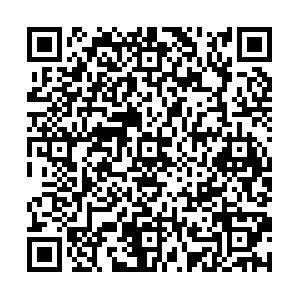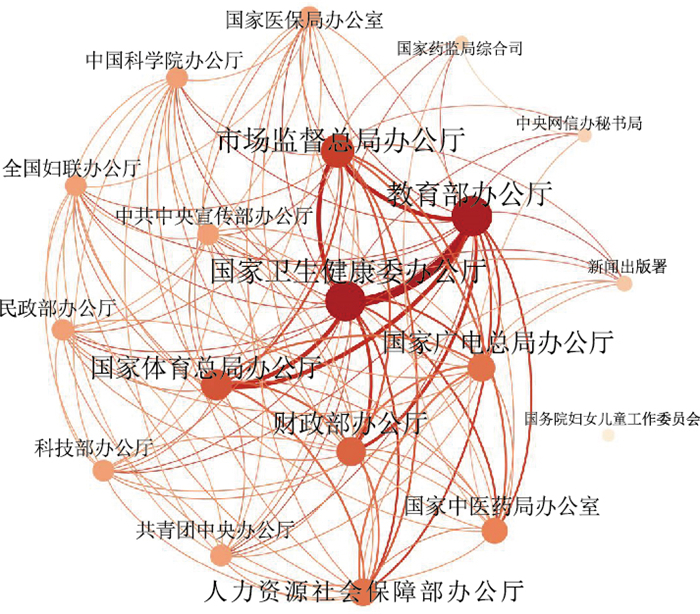Quantitative analysis of policies aimed at the prevention and control of myopia in Chinese children and adolescents
-
摘要:
目的 分析中国儿童青少年近视防控政策,为儿童青少年近视防控领域政策制定及优化提供参考。 方法 基于政策工具理论,采用内容分析法,构建“政策工具—政策对象”二维框架,对中国中央政府层面发布的与儿童青少年近视防控密切相关的43份政策文件进行量化分析。 结果 从政策工具维度看,环境型政策工具使用较多(48.36%),供给型工具(26.39%)和需求型工具(25.25%)使用频次接近。从政策对象维度看,中国儿童青少年近视防控政策在学校方面(26.15%)提出的要求最多,在社会方面(6.18%)提出的要求最少。 结论 儿童青少年近视防控政策应适当提升供给型政策工具的使用效益,提高需求型政策工具的使用频率,以科研成果优化环境型政策工具的使用手段。 Abstract:Objective To analyze the policies that are aimed at the prevention and control of myopia in children and adolescents, and to provide a reference for the adjustment and optimization of follow-up policies. Methods Based on policy tool theory, content analysis was performed to construct a two-dimensional framework of "policy tools-policy objects" and a quantitative analysis of 43 national-level policy texts related to the prevention and control of myopia in children and adolescents. Results From the perspective of policy tools, environment-oriented policy tools were the most widely applied (48.36%), followed by supply-oriented tools (26.39%) and demand-oriented tools (25.25%) which were used closely in frequency. From the perspective of policy objects, the texts put forward requirements in schools (26.15%) were the most and in society the least (6.18%). Conclusion The policies for the prevention and control of myopia in children and adolescents should aim to improve the efficacy of supply-based policy tools and increase the frequency with which demand-based policy tools are adopted, while scientific research should be applied to optimize the quality of environment-based policy tools. -
Key words:
- Health policy /
- Myopia /
- Child /
- Adolescent
1) 利益冲突声明 所有作者声明无利益冲突。 -
表 1 儿童青少年近视防控政策工具类型及解释(n=43)
Table 1. The types and interpretations of policy tools for the prevention and control of myopia in children and adolescents(n=43)
政策工具类型 具体政策工具 政策工具解释 供给型 监测与卫生服务 对儿童青少年视力进行监测,对医疗卫生机构提出的要求(如近视矫正和心理治疗等方面) 人才保障 加快视力监测机构、医疗机构以及眼镜店等专业优秀人才的培养和配备 硬件改造 政府、学校、家庭置换合格的书桌、照明设备,构建合格的光暴露环境以及户外基础设施建设 资金投入 政府财政拨款,加强医院、学校、体育场所的资金支持力度 需求型 组织协同 家校联动、校医联动、学校和政府部门联动以及多单位联合行动 试点示范 遴选和推行试点示范区域,做好试点示范工作 环境型 策略性措施 依据相关的法律法规而采取的行动,制定相应的策略,采取相应的措施 监督管制 政策内容涉及加强对医疗机构、监测机构、学校、眼镜店等机构的监管 卫生运动 对医疗机构、家庭、学校、学生本人以及社会层面等进行卫生运动,如发放科普手册、专家讲座等 目标规划 政府部门对建设近视防控体系提出的目标,对近视防控工作作出规划 表 2 儿童青少年近视防控不同年份政策工具使用率/%
Table 2. The use rate of policy tools for the prevention and control of myopia in children and adolescents with different years/%
年份 监测与卫生服务 人才保障 硬件改造 资金投入 策略性措施 监督管制 目标规划 卫生运动 试点示范 组织协同 2018 9.20 4.60 8.05 2.30 8.05 18.39 3.45 13.79 14.94 17.23 2019 12.00 1.33 2.67 0 2.67 5.33 0 56.00 0 20.00 2020 11.57 1.65 9.09 0.83 7.44 6.61 1.65 35.54 14.05 11.57 2021 15.08 3.91 8.38 0.56 7.82 7.82 1.12 33.52 1.68 20.11 2022 16.36 5.14 6.54 1.87 7.01 10.28 3.27 20.56 7.48 21.50 表 3 儿童青少年近视防控各类政策工具分布
Table 3. The distribution of policy tools for the prevention and control of myopia in children and adolescents
工具类型 工具名称 频数 构成比/% 供给型 监测与卫生服务 94 50.81 (n=185) 人才保障 26 14.05 硬件改造 56 30.27 资金投入 9 4.86 需求型 组织协同 128 72.32 (n=177) 试点示范 49 27.68 环境型 卫生运动 202 59.59 (n=339) 策略性措施 51 15.04 监督管制 71 20.94 目标规划 15 4.42 表 4 儿童青少年近视防控政策工具类型(X维度)与政策对象(Y维度)的交叉列联分布
Table 4. The cross contingency table of the types (X dimension) and targets (Y dimension) of the policy tools for prevention and control of myopia in children and adolescents
政策工具类型 条数 家庭 学校 政府部门 医疗机构 学生 社会 监测与卫生服务 156 13(8.33) 35(22.44) 36(23.08) 62(39.74) 6(3.85) 4(2.56) 人才保障 44 1(2.27) 7(15.91) 15(34.09) 16(36.36) 0 5(11.36) 硬件改造 97 13(13.40) 30(30.93) 27(27.84) 19(19.59) 2(2.06) 6(6.19) 资金投入 14 1(7.14) 3(21.43) 6(42.86) 2(14.29) 0 2(14.29) 策略性措施 77 7(9.09) 27(35.06) 21(27.27) 15(19.48) 1(1.30) 6(7.79) 监督管制 101 7(6.93) 15(14.85) 57(56.44) 17(16.83) 1(0.99) 4(3.96) 目标规划 12 1(8.33) 1(8.33) 6(50.00) 2(16.67) 1(8.33) 1(8.33) 卫生运动 294 60(20.41) 83(28.23) 39(13.27) 40(13.61) 48(16.33) 24(8.16) 试点示范 54 5(9.26) 10(18.52) 28(51.85) 7(12.96) 1(1.85) 3(5.56) 组织协同 258 42(16.28) 73(28.29) 69(26.74) 46(17.83) 9(3.49) 19(7.36) 注: ()内数字为构成比/%。 -
[1] 陶芳标. 中国儿童青少年近视病因模型及其政策与策略导向的预防控制[J]. 安徽预防医学杂志, 2022, 28(4): 261-265. https://www.cnki.com.cn/Article/CJFDTOTAL-AHYF202204001.htmTAO F B. The etiological model and the prevention and control of myopic drived by policy and strategy among Chinese children and adolescents[J]. Anhui J Prev Med, 2022, 28(4): 261-265. (in Chinese) https://www.cnki.com.cn/Article/CJFDTOTAL-AHYF202204001.htm [2] 李丹琳, 刘民歆, 梁刚, 等. 睡眠及昼夜节律与儿童青少年近视发生的关联[J]. 中国学校卫生, 2022, 43(9): 1428-1431, 1435. doi: 10.16835/j.cnki.1000-9817.2022.09.036LI D L, LIU M X, LIANG G, et al. Association between sleep and circadian rhythms with the development of myopia in children and adolescents[J]. Chin J Sch Health, 2022, 43(9): 1428-1431, 1435. (in Chinese) doi: 10.16835/j.cnki.1000-9817.2022.09.036 [3] 周攀峰, 陶芳标, 伍晓艳. 光暴露与儿童青少年近视[J]. 中国学校卫生, 2022, 43(3): 467-471. doi: 10.16835/j.cnki.1000-9817.2022.03.036ZHOU P F, TAO F B, WU X Y. Light exposure and myopia in children and adolescents[J]. Chin J Sch Health, 2022, 43(3): 467-471. (in Chinese) doi: 10.16835/j.cnki.1000-9817.2022.03.036 [4] 王宁利, 李仕明, 魏士飞. 我国儿童青少年近视眼防控工作中的重点和难点[J]. 中华眼科杂志, 2021, 57(4): 241-244.WANG N L, LI S M, WEI S F. The key points and difficulties in the prevention and control of myopia in children and adolescents in China[J]. Chin J Ophthalmol, 2021, 57(4): 241-244. (in Chinese) [5] 朱厚伟, 史曙生, 郑哲. 我国青少年视力状况的时空演变特征分析[J]. 浙江师范大学学报(自然科学版), 2022, 45(3): 352-360. https://www.cnki.com.cn/Article/CJFDTOTAL-ZJSZ202203015.htmZHU H W, SHI S S, ZHENG Z. Analysis of the temporal and spatial evolution characteristics of visual acuity of adolescents in China[J]. J Zhejiang Norm Univ(Nat Sci), 2022, 45(3): 352-360. (in Chinese) https://www.cnki.com.cn/Article/CJFDTOTAL-ZJSZ202203015.htm [6] 谭春辉, 谢荣, 刘倩. 政策工具视角下的我国科技评估政策文本量化研究[J]. 情报杂志, 2020, 39(10): 181-190. https://www.cnki.com.cn/Article/CJFDTOTAL-QBZZ202010028.htmTAN C H, XIE R, LIU Q. A quantitative study of Chinese science and technology evaluation policy text from the perspective of policy instrument[J]. J Intell, 2020, 39(10): 181-190. (in Chinese) https://www.cnki.com.cn/Article/CJFDTOTAL-QBZZ202010028.htm [7] 唐云霓, 闫如雪, 周艳玲. 碳中和愿景下能源政策的结构表征与优化路径[J]. 清华大学学报(自然科学版), 2023, 63(1): 1-14.TANG Y N, YAN R X, ZHOU Y L. Structural representation and optimization path of energy policy under the carbon neutral vision[J]. J Tsinghua Univ (Sci Technol), 2023, 63(1): 1-14. (in Chinese) [8] 黄红华. 政策工具理论的兴起及其在中国的发展[J]. 社会科学, 2010(4): 13-19, 187. https://www.cnki.com.cn/Article/CJFDTOTAL-SHKX201004002.htmHUANG H H. On emergence of policy instrumentation theory and its development in China[J]. J Soc Sci, 2010(4): 13-19, 187. (in Chinese) https://www.cnki.com.cn/Article/CJFDTOTAL-SHKX201004002.htm [9] ROTHWELL R, ZEGVELD W. An assessment of government innovation policies[J]. Rev Policy Res, 2010, 3(3-4): 436-444. [10] 堵琴囡. 政策工具运用和平台经济健康发展: 基于我国平台经济治理政策的文本分析[J]. 浙江理工大学学报(社会科学版), 2022, 48(6): 1-10.DU Q N. Policy tool application and healthy development of platform economy: text analysis based on China's platform economic governance policy[J]. J Zhejiang Sci-Tech Univ(Soc Sci), 2022, 48(6): 1-10. (in Chinese) [11] 荣红国, 邢叶一祎, 董玥, 等. 政策工具视角下我国抗菌药物合理用药政策研究[J]. 中国卫生政策研究, 2021, 14(8): 45-51. https://www.cnki.com.cn/Article/CJFDTOTAL-ZGWZ202108007.htmRONG H G, XING Y Y W, DONG Y, et al. A study on rational use policies of antibacterial drugs in China: a perspective of policy tools[J]. Chin J Health Policy, 2021, 14(8): 45-51. (in Chinese) https://www.cnki.com.cn/Article/CJFDTOTAL-ZGWZ202108007.htm [12] 赵明明, 钱爱兵. 政策工具视角下我国疫苗接种政策文本量化分析[J]. 医学与社会, 2022, 35(9): 59-65.ZHAO M M, QIAN A B. Quantitative analysis of vaccination policy texts in China from the perspective of policy tools[J]. Med Soc, 2022, 35(9): 59-65. (in Chinese) [13] 包水梅, 陈嘉诚. 政策工具视角下我国"双一流"建设高校教学评价政策偏好研究[J]. 高校教育管理, 2022, 16(5): 40-51. https://www.cnki.com.cn/Article/CJFDTOTAL-ZJSK202205004.htmBAO S M, CHEN J C. Policy preferences of teaching evaluation in "double first-class" construction universities in China from the perspective of policy tools[J]. J Chin Univ Manage, 2022, 16(5): 40-51. (in Chinese) https://www.cnki.com.cn/Article/CJFDTOTAL-ZJSK202205004.htm [14] 胡志, 丁宏, 牛丽娟, 等. 卫生管理学教程[M]. 安徽: 安徽科学技术出版社, 2003.HU Z, DING H, NIU L J, et al. Health management course[M]. Anhui: Anhui Science & Technology Publishing House, 2003. (in Chinese) [15] 文宏, 杜菲菲. 注意力、政策动机与政策行为的演进逻辑: 基于中央政府环境保护政策进程(2008—2015年)的考察[J]. 行政论坛, 2018, 25(2): 80-87. https://www.cnki.com.cn/Article/CJFDTOTAL-XZNT201802013.htmWEN H, DU F F. The evolution logic of attention, policy motivation and policy behavior: based on the inspection of process of central government's environmental protection policy from 2008 to 2015[J]. Admin Trib, 2018, 25(2): 80-87. (in Chinese) https://www.cnki.com.cn/Article/CJFDTOTAL-XZNT201802013.htm [16] LI S M, RAN A R, KANG M T, et al. Effect of text messaging parents of school-aged children on outdoor time to control myopia: a randomized clinical trial[J]. JAMA Pediatr, 2022, 176(11): 1077-1083. [17] 熊烨. 政策变迁中的反馈机制: 一个"理念-工具"分层框架: 以我国义务教育阶段"减负"政策为例[J]. 公共管理与政策评论, 2022, 11(5): 14. https://www.cnki.com.cn/Article/CJFDTOTAL-GGZC202205013.htmXIONG Y. Feedback mechanism in policy change: a hierarchical framework of "idea-tool": taking the "burden reduction" policy in the stage of compulsory education in China as an example[J]. Public Admin Policy Rev, 2022, 11(5): 14. https://www.cnki.com.cn/Article/CJFDTOTAL-GGZC202205013.htm [18] SCHNEIDER A, INGRAM H. Behavioral assumptions of policy tools[J]. J Polit, 1990, 52(2): 510-529. http://spia.uga.edu/faculty_pages/tyler.scott/teaching/PADP6950_Spring2017/Readings/Schneider.Ingram.1990.pdf [19] EDMONDSON D L, KERN F, ROGGE K S. The co-evolution of policy mixes and socio-technical systems: towards a conceptual framework of policy mix feedback in sustainability transitions[J]. Res Pol, 2019, 48(10): 103555. -







 下载:
下载:

